The 21st century is considered to be an era of great development of optoelectronic technology. Related industries with laser technology as the core will become an important driving force in the information age. Display technology is also undergoing major changes from the era of "black and white display - color display - digital display" to the era of "laser display". The international display industry believes that laser display is "a revolution in the history of human vision" and is the mainstream display of the next generation. technology.
Imaging principle of laser display technology
The laser display system is mainly composed of three primary color laser light sources, an optical engine and a screen. The optical engine is mainly composed of a red, green and blue three-color light valve, a combined X prism, a projection lens and a driving light valve. The light valve is driven to generate small images corresponding to red, green and blue colors respectively, and then respectively introduced into three. The color laser illumination is projected onto the screen to produce a full-color display image. Acting as a light valve and a driving source may be various micro display systems such as LCD, LCoS, DMD, GLV, and the like.
The working principle is shown in Figure 1.1: the red, green and blue lasers are respectively expanded, shimmed, decoherent and then incident on the corresponding light valve. The image is modulated on the light valve. The three-color laser is combined by the X prism and incident on the projection objective, and finally projected onto the screen through the projection objective to obtain a laser display image.
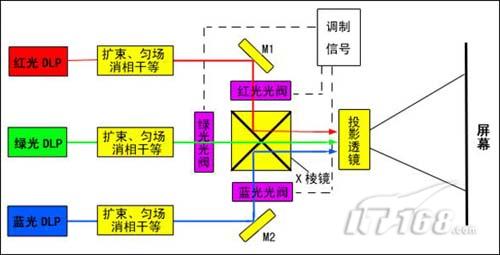
Laser display imaging optical path diagram
The revolutionary advantage of laser display technology
The light display technology is a display technology using a high saturation red, green, and blue (RGB) three-primary laser as a light source. It makes full use of the characteristics of laser wavelength selectivity and high spectral brightness, so that the display image has a larger color gamut performance space, the color gamut coverage can reach 90%, and can achieve twice the color reproduction ability of the traditional light source, color The saturation is more than 100 times that of the conventional display. It can display the colors that the human eye can recognize to the greatest extent, and truly reproduce the rich and colorful colors of the objective world, providing more powerful expressive power.
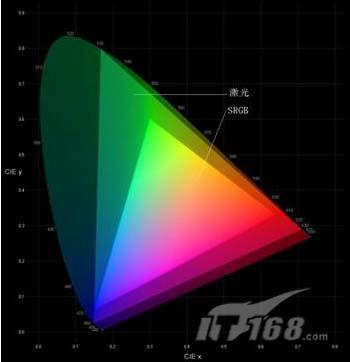
Color gamut coverage of red, green and blue lasers in the international standard color gamut of human visible spectrum
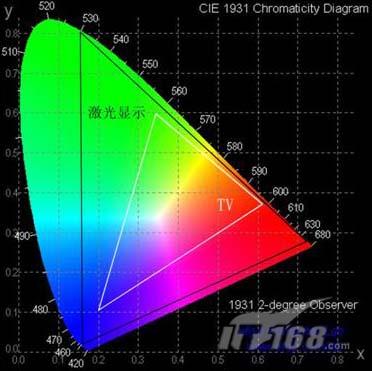
Laser display color gamut coverage is more than twice the NTSC standard
At the same time, the traditional light source belongs to the flood light source, and the optical divergence angle is large, which is not conducive to the energy transmission of the illumination system. Different from the bulb light source and the LED light source, the laser has superior spatial transmission characteristics, high brightness, high light energy utilization efficiency on a small chip, so that high-definition large screen and large screen projection can be realized. display. In 2005, the 500-square-meter laser that was tried by the Aichi Expo in Japan showed “the house of the earthâ€; in 2008, Beijing Zhongshi Zhongke Optoelectronic Technology Co., Ltd. independently innovated the laser front projection equipment successfully applied to the main operation center (MOC) of the Beijing Olympic Games; The company's first laser theater, which is supported by technology and equipment, is officially in operation, all of which demonstrate the superior features of laser display technology in high-definition large-screen display.
In addition, due to other characteristics of the laser itself, the laser display technology can also achieve no need to replace the light source (maintenance-free), maintain long-term high image quality, brightness and color temperature can be adjusted at any time, achieve ultra-high brightness, adapt to various engineering projection environments The realization of a noiseless projection environment, etc., will lead to a revolutionary improvement in the overall performance of the display system, which undoubtedly gives the laser display technology a broad space for development in high-end applications, especially in the high-end large-screen display market.
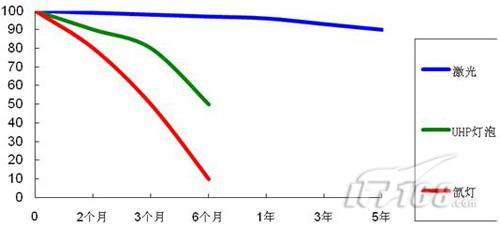
Comparison of brightness changes of various light sources
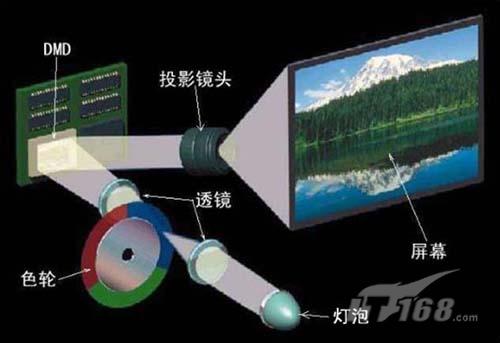
Schematic diagram of traditional bulb projection imaging principle
The traditional back projection scheme is mainly composed of a process of a light source, a color wheel, an image engine chip, an optical path, a projected color combination, a projection objective, and a screen. Using laser as the projection light source, the laser light source color separation and time-sharing characteristics can be fully utilized, and the spectrum synthesis and time-sharing mode can be directly applied to the illumination optical image chip, and the UV, infrared and polarization which must have been used in the optical machine in the past are discarded. Some optical devices such as mirrors and fly-eye lenses greatly simplify the projector's optical path structure.
Source of information: Internet
Tunnel Mirror,Led Tunnel Mirror,Infinity Tunnel Mirror,Magic Bathroom Mirror
Aosmay , https://www.aosmay.com